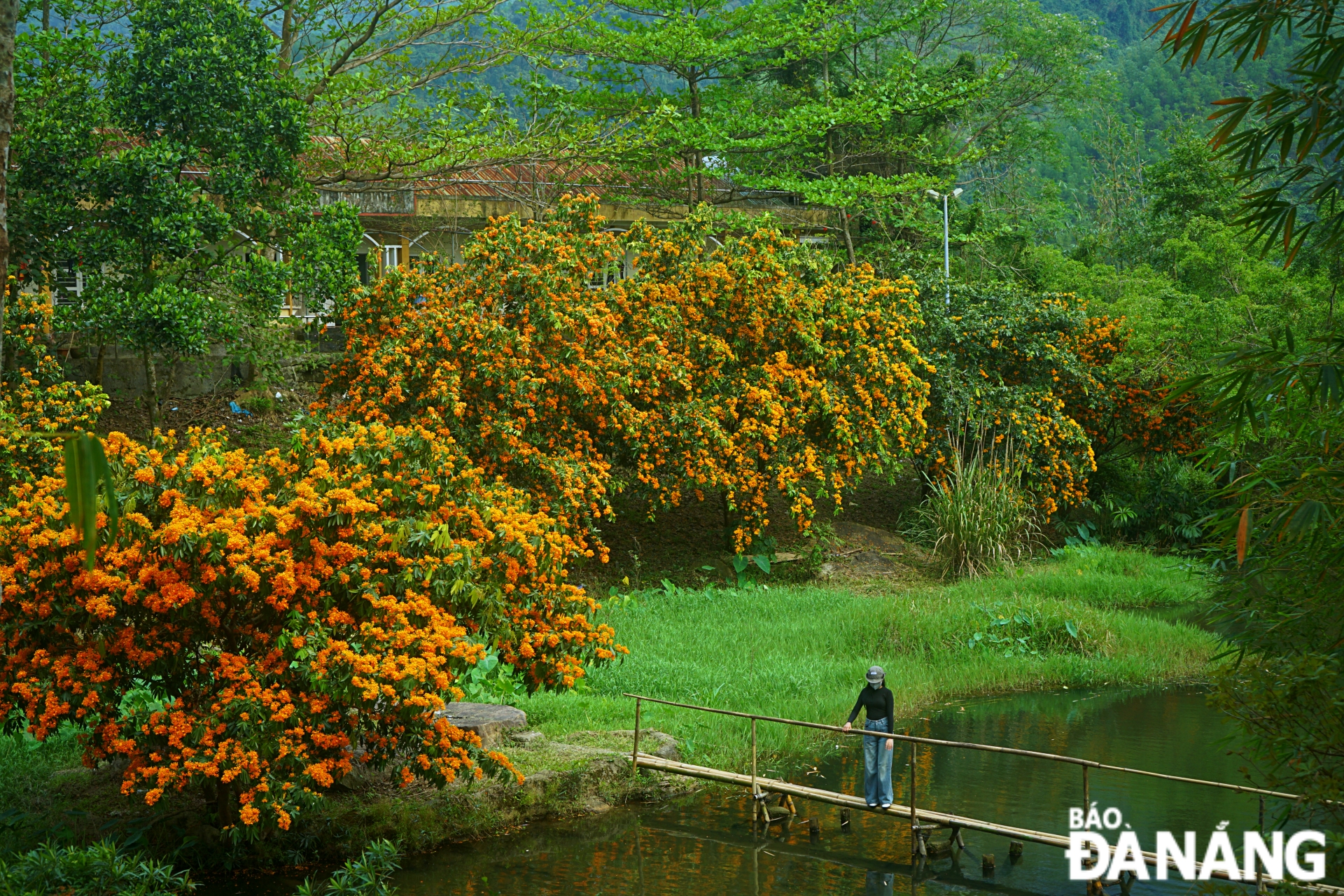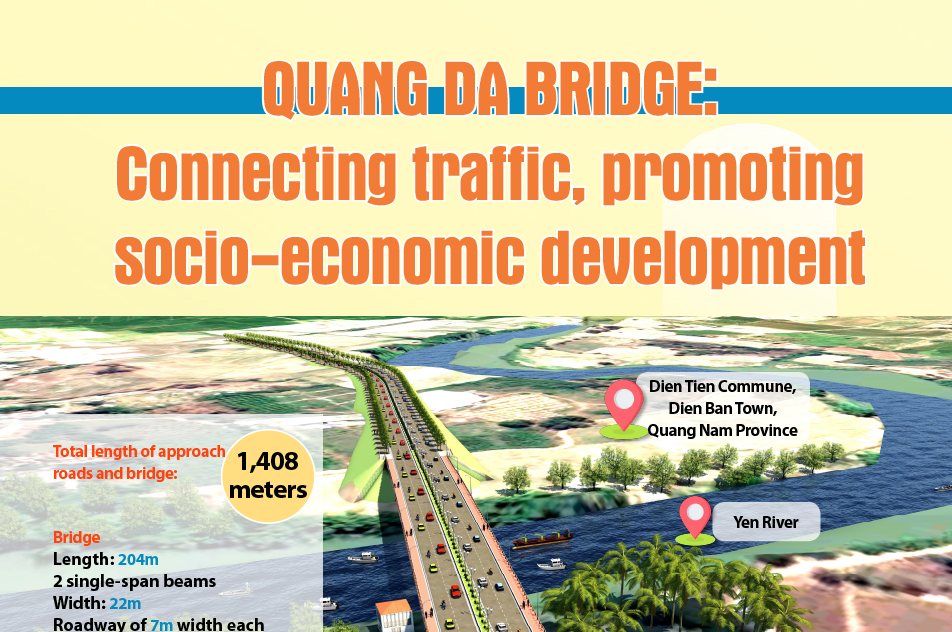Hoa Vang expected to become unforgettable travel destination in Da Nang
The entire city of Da Nang is responsible for promoting the development of Hoa Vang Suburban District. Positive results have been achieved in new rural construction, urban planning, tourism development, industrial park development, and other aspects which all have helped bring a new face to this rural district. Hopefully, in the near future, Hoa Vang will become a bright spot for urban development, an unforgettable travel destination, and a typical model of crop and livestock restructuring.
 |
| Hoa Vang boasts a clean environment, friendly people, beautiful roads, unique architecture and community activities imbued with the peaceful style of the Vietnamese countryside, making it a beautiful and peaceful place, more inviting to domestic and foreign tourists. |
Planning for unplanned areas
Hoa Vang will become a town in the near future as dozens of development projects are underway while dozens of planning projects and a number of new industrial parks, and tourism facilities are being developed. Included is a core urban subdivision covering an area of more than 200 hectares which features urban, residential, administrative and production areas. Everyone hopes that these projects will be turned into reality as soon as possible in a bid to promote the development of Hoa Vang, and Da Nang as a whole.
However, there is a great need for the city to make planning for unplanned areas in an attempt to preserve rice fields and historical relics, and cultural sites to protect rural landscape. There should be little or no new development along the banks of Yen, Truong Dinh, Cu De rivers, in the midland and mountainous areas, rice fields and fruit growing areas. Hoa Phu and Hoa Bac communes are very inviting to tourists due to their peaceful life, and magical sound of pagoda bells in early morning and late at night. Focus will be on promoting the development of Hoa Vang while special attention will be paid to preserving traditional rural architecture, the natural environment surrounding it, and the socio-cultural traditions of rural areas.
Shady roads to be created
Trees should be planted along asphalt roads leading to the villages and hamlets. Shady riverside roads should be created in Hoa Vang. Local history related to trees such as tamanu, and yellow apricot should be selected to be planted along these roads in order to make Hoa Vang different from other Vietnamese rural areas. Hopefully, roads planted with yellow apricot trees will be created in Hoa Vang in the next 5 to 7 years so that these roads will be brightened with yellow apricot blossoms when the Lunar New Year holiday or Tet Festival arrives, making Hoa Vang an unforgettable travel destination for domestic and foreign tourists.
Poinciana or other types of trees must be planted in all roads and public places in Hoa Vang, especially schools and hospitals. In addition, each house and garden area should be covered with flowers and plants. Importance should be attached to creating spaces covered in green trees during the process of turning Hoa Vang into a town.
Preserving cultural identity of Co Tu ethnic minority people
The unique feature of Hoa Vang, and Da Nang as a whole, is that there is a village where the Co Tu ethnic minority people have lived for a long time. The village is a typical living area of the indigenous Co Tu ethnic minority group that mainly lives in the western part of Quang Nam Province as some of them concentrate in a long-standing village in Da Nang’s rural area. Hoa Vang must take appropriate measures to protect cultural heritage of the Co Tu people in order to prevent the assimilation of them into the Vietnamese-speaking community during their education and cultural activities. Hoa Vang will become a living museum to introduce ethnographers to the Co Tu People's culture with their special cultural products, including masks, bamboo-tube rice, Doac wine.
Agricultural museum to be built
A convenient site where there are rice fields, rural roads and rural landscape will be chosen in Hoa Vang to build a typical agricultural museum of Central Viet Nam. The Museum will be dedicated to the preservation and interpretation of the region's agricultural history and rural heritage in an unique manner. The museum will be a gem of object collections including farming artifacts. It will also showcase offshore fishing products, and present the history of traditional craft villages that have originated from Hoa Vang, including Nam O fish sauce and Cam Ne sedge mat-making villages.
The museum will be dedicated to the preservation of rural culture in the Quang region, and the central region as a whole, for future generations. This place is expected to become a tourist attraction to vividly introduce the life of Hoa Vang’s farmers.
Hoa Vang will never have high rises and skyscrapers, splendid entertainment spots along with modern amenities that are developed in urban areas but it boasts a clean environment, friendly people, beautiful roads, unique architecture and community activities imbued with the peaceful style of the Vietnamese countryside, making Hoa Vang a beautiful and peaceful place, more inviting to domestic and foreign tourists.
Reporting by HUYNH THUC NHA- Translating by H.L








